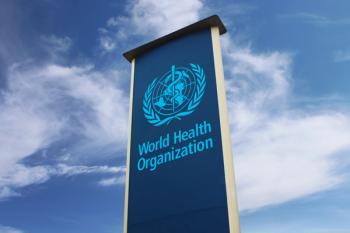
Case of Postoperative Heart Attack Demonstrates How MG Can Complicate Cardiac Procedures
A patient with myasthenia gravis (MG) quickly deteriorated after he woke up from an endovascular procedure.
Although endovascular abdominal aneurysm repair (EVAR) is a common procedure associated with low rates of morbidity and mortality, a new case report highlights the need for extra care when dealing with patients with comorbid
The report,
Following his procedure, the patient was removed from total intravenous anesthesia and became fully awake within a few minutes. He was breathing calmly on his own, the investigators said. However, his status soon worsened.
“He was transferred to the post–anesthesia care unit, where 5 minutes later he suddenly became unresponsive, hemodynamically unstable, and, finally, pulseless,” they reported.
The patient was intubated and given advanced cardiac life support. Spontaneous circulation returned after 6 minutes of CPR. An electrocardiogram indicated the patient had suffered an anterior acute myocardial infarction (AMI). He was given a trans-thoracic echocardiogram and other testing, after which he was transferred for a brain CT. His carotid, thoracic, and abdominal CT angiography were normal, except for bilateral chronic cervico-cranial arterial dissection, the authors said.
He was sent to a catheterization laboratory where he was found to have 90% stenosis of his left anterior descending artery, with fresh thrombus.
“We assumed that an atheromatous plaque causing a moderate stenosis that was not identified in the preoperative stress test had ruptured postoperatively and that accumulated thrombus worsened the lumen stenosis to a critical level,” the authors said.
The patient was given a drug-eluting stent, and a brain CT 24 hours later showed no signs of cerebral ischemia or edema. Twenty-four hours after that, the patient was alert and neurologically normal, but his cardiac enzymes were elevated. He was discharged 12 days after his surgery and prescribed a dual antiplatelet regimen.
The authors said typical cardiac manifestations of MG include arrhythmias, giant cell myocarditis, heart failure, and cardiac arrest.
“Moreover, MG treatment with anticholinesterase inhibitors may also trigger acute cardiac events,” they said. “This is due to a greater supply of acetylcholine at the synaptic cleft.”
In this case, the patient’s AMI appeared to be unrelated to MG. Still, the authors said patients with MG are at a higher risk of complications after major surgeries. One recent report found the odds ratio of an AMI after hip and knee arthroplasty to be 7.4.
“Surprisingly, widespread use of preoperative stress testing in many centers did not reduce perioperative major adverse cardiovascular events,” they noted.
When the investigators tried to find a case in which a patient had both AAA and MG, they found only 1 reported case in English-language literature. They said little data exist regarding the risk of AMI following vascular procedures in patients with MG. In the absence of more data, the authors urged surgeons to be cautious.
“[W]e suggest that surgeons inform patients of the higher surgical risk in MG, control meticulously the MG preoperatively, avoid muscle relaxants and other medications that are contraindicated in MG, and give special care during the postoperative period,” they concluded.
Reference
Papadoulas SI, Zotou A, Kouri N, et al. Myasthenia gravis and abdominal aortic aneurysm: a rare combination. Aorta (Stamford). Published online March 20, 2023. doi:10.1055/a-2051-7678
Newsletter
Stay ahead of policy, cost, and value—subscribe to AJMC for expert insights at the intersection of clinical care and health economics.













































